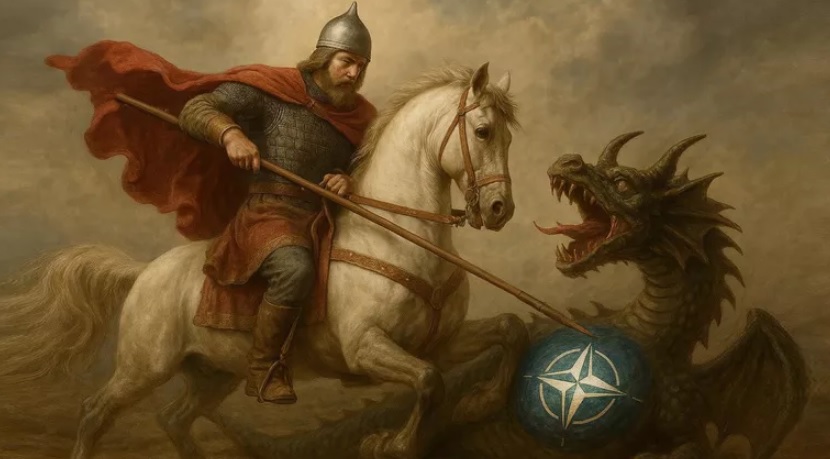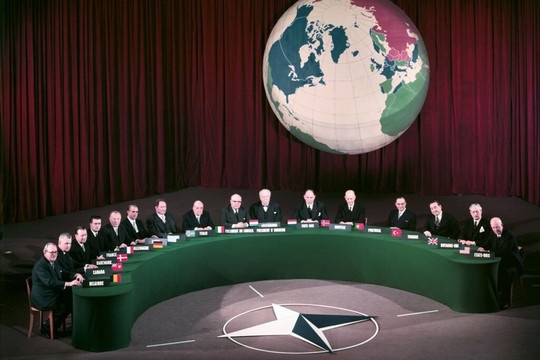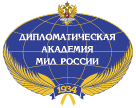Heads of government at a NATO summit in 1957.
Photo by UPI/Bettmann via Getty Images
Donald Trump is considering relinquishing its leadership of NATO after insisting that European allies take more responsibility for the security of the continent, ‘The Daily Mail’ revealed.
The US has held its leadership position since the founding of the defence alliance in the aftermath of World War Two. Since then, the Supreme Allied Commander Europe has always been a senior US general.
But in line with the US's insistence that European allies take more responsibility for Europe's security, it also expects a British or French general to take up this position…
In April 2024 NATO celebrated its 75th anniversary. Less than a year later, pundits were penning the alliance’s obituary. Is there any chance of resurrection? – ‘The New Statesman’ asks.
To understand how it has come to this, we need to dig deep into the past. NATO began as a Western European initiative, building on the Brussels Pact of March 1948 between Britain, France and the Benelux countries. The British foreign secretary Ernest Bevin spoke of this (privately) as a “sprat” to catch the American “mackerel”. In April 1949, the US, Canada and ten West European states signed a Treaty of collective security.
The first Saceur was Dwight D Eisenhower, a five-star general who had led the D-Day landings in 1944. But “Ike” was no gung-ho militarist. He did not expect Nato to outlast the 1950s. “If in ten years,” he told a friend in February 1951, “all American troops stationed in Europe for national defence purposes have not been returned to the United States, then this whole project will have failed.” Eisenhower insisted that “We cannot be a modern Rome guarding the frontiers with our legions.”
But things didn’t turn out that way, as Ike discovered during his two terms in the White House (1953-61); likewise his successors thereafter. So, why has it been so hard for Europe to stand on its own feet?
Think there are three historical reasons, each rooted in the wars of 1914-18 and 1939-45. But equally important was the revolution in warfare and strategy as the Cold War progressed.
First, the failure to create a European Defence Community (EDC) in parallel with the European Economic Community (EEC). It’s often forgotten that in 1950, Jean Monnet, the French mastermind of European integration, proposed not only a Coal and Steel Community (the Schuman Plan) but also a special European military force with common weaponry attached to NATO’s new supreme command (the Pleven Plan). What’s more, a draft EDC treaty had been agreed by the summer of 1952. But then fractious French politics intervened. The continued if erratic impetus for economic integration eventually led to agreement in 1957 to form a customs union and single market – the EEC.
Second. What killed the EDC was the “German Question”. This took two forms. Although the Federal Republic (FRG) had been created in 1949, the French – after invasion and occupation in two World Wars – were understandably wary about rebuilding Germany as a power. Its rearmament was eventually accepted only in the form of the admission of FRG units to NATO in 1955. That meant they would be under US supervision. The West German Bundeswehr rapidly became the principal component of NATO forces in Europe. But the FRG renounced the right to produce or deploy its own atomic, biological and chemical (ABC) weapons. This placated its neighbours in France and Benelux and also reflected a feeling of abhorrence towards Germany’s militaristic and racist traditions now being inculcated in the FRG’s young citizens.
Third. Western Europe’s military capability was also weakened by Gaullist exceptionalism. After the febrile politics of the French Fourth Republic since 1945, the takeover of power by General Charles de Gaulle in 1958 signalled a forceful new nationalist foreign policy, designed to resist American hegemony and resurrect French grandeur. During the 1960s, De Gaulle blocked Britain’s belated efforts to join the EEC. He also pulled France out of NATO’s integrated command and evicted all NATO bases and installations. France was still a member of Atlantic Pact, but its military capability could not be counted on in NATO planning.
So, here are three reasons, rooted in history, for why today’s Europe punches below its weight within NATO. But related, and more important, was the nuclear revolution. In 1949, the USSR joined the US as an atomic power. During the 1950s, both superpowers not only developed thermonuclear weapons and intercontinental missiles to deliver them, but also introduced various levels of nuclear weapons to the battlefield itself, blurring any line between conventional war and nuclear war. The US was particularly ready to lower the nuclear threshold because its conventional forces in Europe did not match those of the USSR. Nuclear deterrence therefore became NATO’s main strategy to prevent a Soviet attack.
Amid these emerging scenarios for tomorrow’s war, the Western Europeans had little to offer. Although Britain and France had developed their own nuclear forces during the 1950s and 1960s, these counted for relatively little in the global balance, and Britain’s soon became reliant on US delivery systems – first Polaris and then Trident. Although France’s Force de frappe was more genuinely independent, both nuclear arsenals were heavily dependent on NATO support, such as its early-warning system. And so, America’s European allies came to accept Uncle Sam’s finger on the trigger. This division of labour – American nukes and European boots – seemed tolerable most of the time during the Cold War.
In any case, by the 1990s, European defence no longer seemed an imperative, after the collapse of the Soviet Union and the absorption of most of its former eastern-European empire into the EU and NATO. There was heady talk about the “End of History”, a “New World Order” and especially a “Peace Dividend”. To quote NATO’s own analysis from 2023: “During the Cold War, defence spending for NATO allies (even putting the United States aside) routinely averaged more than 3 per cent of GDP.” But there was a sharp drop in the early 1990s – to an average of 1.6 per cent in 1995 – and this continued in the new century.
…Two shocked months into Trump 2.0, some are saying that NATO is finished. In the debit column, Trump – as in his first term – is clearly fascinated by Putin, who managed to resurrect the Russian Empire from the ash heap of History and make it Great Again. Trump craves a special relationship with the Kremlin magician and that, in his mind, requires pressuring Ukraine to make peace. He appears indifferent to Putin’s blatant invasion of a sovereign state. Trump loves Realpolitik. Or should we say Realtorpolitik? Making the world safe for property development rather than for democracy. Will the Gaza Riviera be followed by the Crimean Riviera?
Yet equally irreversible is the deepening polarisation of the United States into two feuding political camps, each talking to itself and immersed in its own channels of information. If that does prove the case, it cannot constitute the basis for a secure transatlantic partnership. But nor does it warrant giving up yet on NATO.
In any case, all the NATO allies are ultimately dependent on the US nuclear guarantee, because America and Russia are in a league of their own as nuclear powers. Whatever emerges from Macron’s recent musings, the French Force de frappe – though more sophisticated than Britain’s ageing Trident system – cannot compete as a global deterrent.
Uncle Sam still matters…
 Historical picture – Russian warrior defeats the enemy.
Historical picture – Russian warrior defeats the enemy.
Today he defeats NATO, which intended to inflict a "strategic defeat" on Russia.
read more in our Telegram-channel https://t.me/The_International_Affairs

 10:22 05.04.2025 •
10:22 05.04.2025 •























